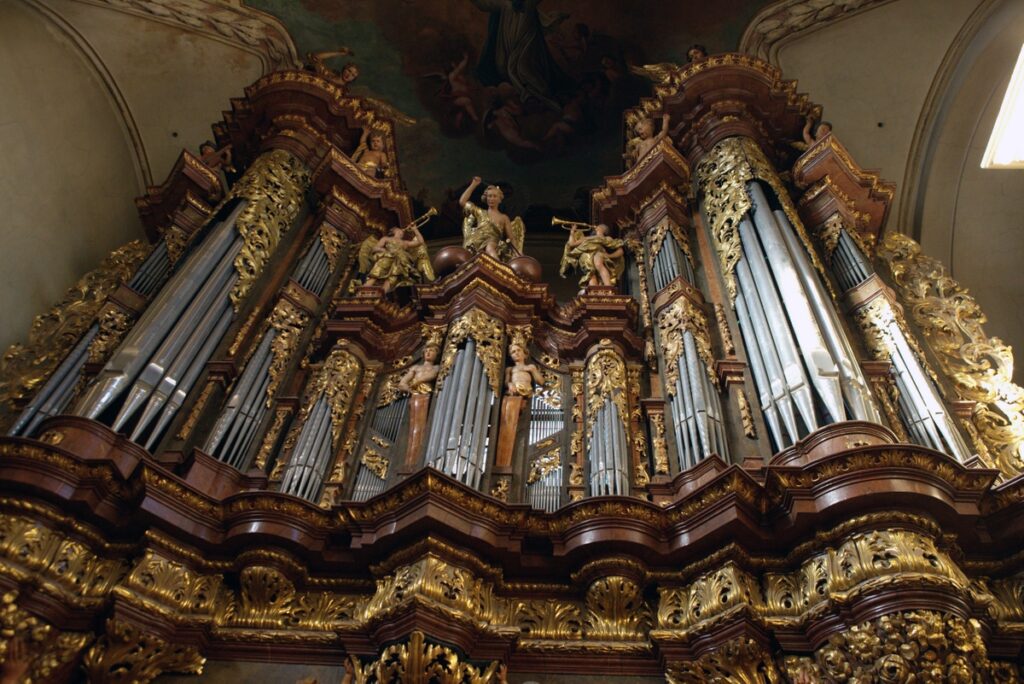Great Organ
The origin of St. James‘ large organ dates to the very beginning of the 18th century. After a major fire in 1689 which caused serious damage to the church, the need arose of obtaining a new organ. The task of building it was taken up by Abraham Stark of Loket (1659-1709), who had by then already produced several organs for various localities in Bohemia. The new two-manual organ with a pedal keyboard and 26 stops was completed in 1705. Its case, which is still admired today, was quite unique in its time. The organ had a short lower octave, a fact that limited its potential. In 1754 it underwent its first reconstruction which was performed by Kralice organ-builder František Katzer (1702-1764). By interposing major F sharp and major G sharp notes he obtained a broken octave, and he replaced pedal mixture by a reed stop „Posaune“. The second half of the 19th century witnessed further changes of specification, although now it is not known who exactly carried them out. The process of the organ romantization then continued in 1906, when the Prague organ-building firm of Josef Černý and Josef Rejna, removed the broken octave and replaced several stops. A truly substantial, indeed critical transformation of what had until then been essentially still a Baroque organ, took place in 1941, based on the design of Bedřich Antonín Wiedermann. The commission went to the organ-building factory of Jan Tuček, in Kutná Hora. The outcome of that endeavour was a large three-manual electro-pneumatic organ with 75 stops and wide compass of keyboards. The extension involved enlargement of the case; a separate, swell-box was installed on either of the church side galleries; and everything came to be controlled from a new electric console supplied by the German firm Laukhuff, also installed on the side gallery. The organ Romantic disposition yielded a remarkably varied selection of solo voices in the basic foot-lenghts positions 16′-8′-4′. The next reconstruction, which took place in 1956, was carried out by the organ building firm „Organa“ of Kutná Hora. By then the impact of the German organ reform contributed to the progressive departure from the Romantic concept of the disposition of stops, and the eventual return to the Baroque voice pattern. The electric console was moved to the church rear chancel, and all of the pipe actions were subjected to mensural corrections, as well as to those of specification. So far the latest major reconstruction was carried out between 1981 and 1982 by „Varhany Krnov“ (Rieger-Kloss). The new specification of stops restored all of Stark’s original voices, mostly including original pipes, and preserved many interesting Romantic tone-colours. At present the organ has four manuals, 91 speaking stops and 8,277 pipes.
In 2011 the organ-building factory Robert Ponča – VARHANY from Krnov carried out a general modernisation of the organ console, i.e. an installation of optoelectronic contacts for the manual keyboards and an installation of the memory data unit SETZER with 4,000 combinations.

